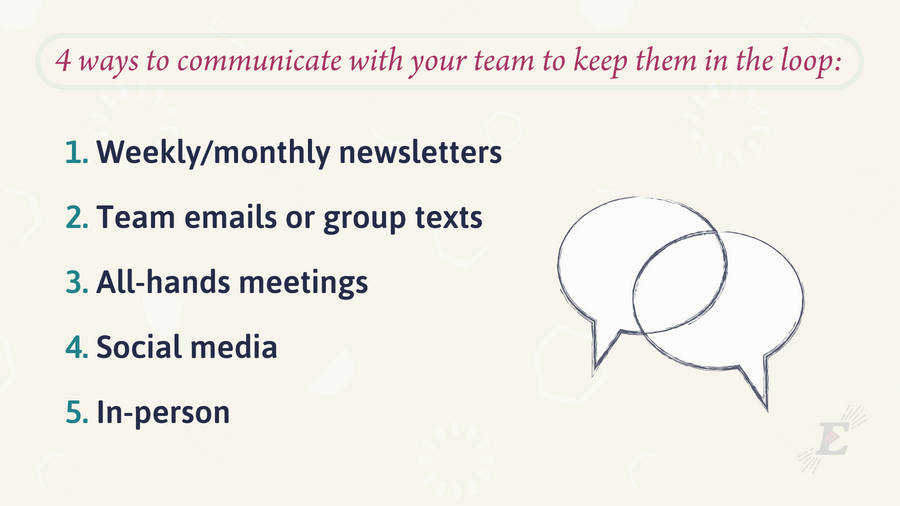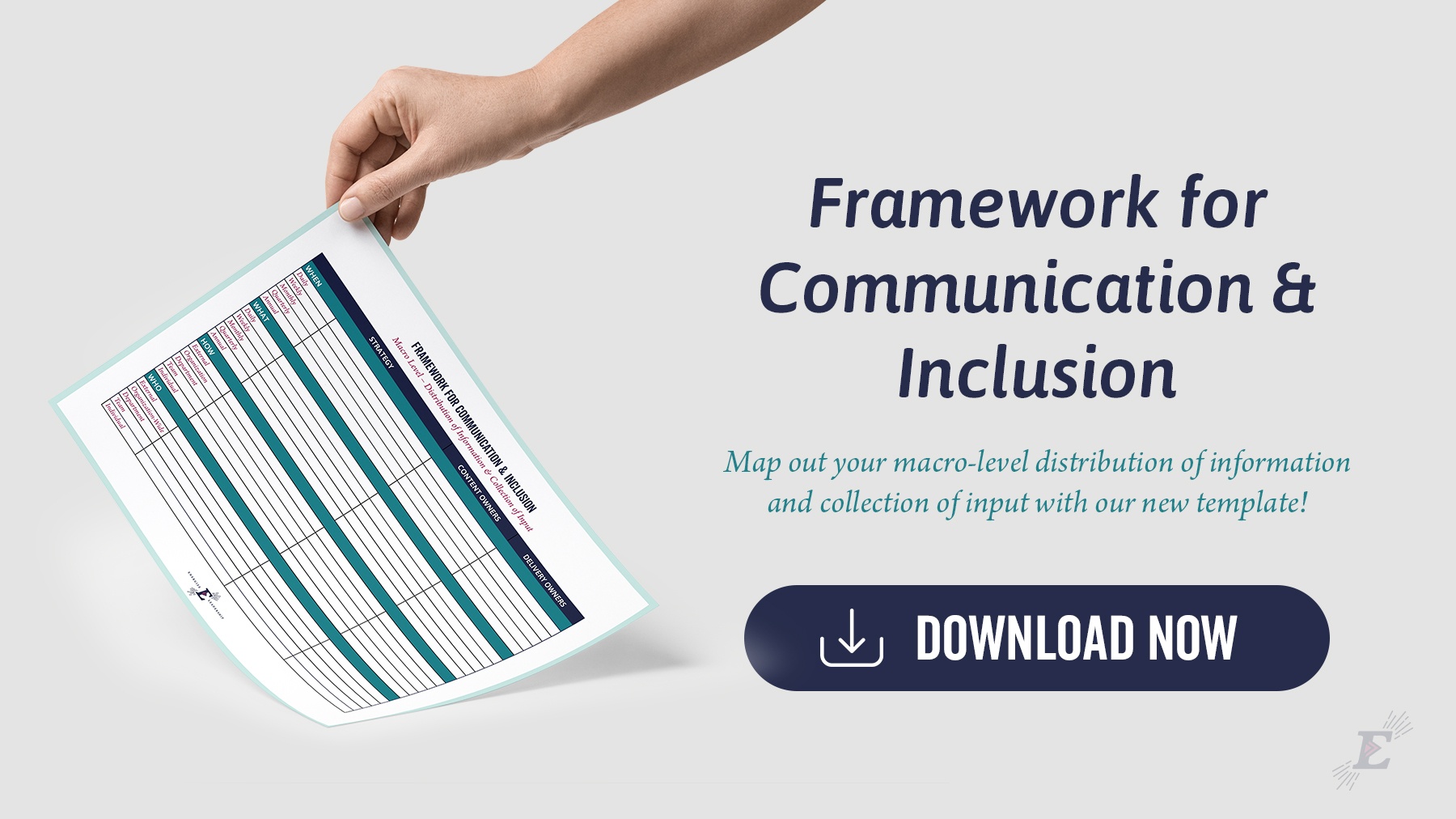5 Ways Leaders Can Effectively Communicate With Their Employees So They’re Not Left In The Dark
There is a wealth of data to suggest that among the top reasons why employees get frustrated at work, feeling out of the loop on decisions that bear an impact on them ranks as pretty high.
According to a 2014 About.com survey, employees cite a lack of communication from management on the constant changes happening around the workplace as being key to contributing to their dislike of work. In another study, researchers found that a quarter of employees have quit – or known someone who has – because they weren’t in the know on the performance and direction of the company. 4 out of 5 employees surveyed also wanted to hear more frequently from their bosses, and more than half felt that they needed to resort to their own detective work to discover what’s really going on.
So why does this matter? Because clearly, employees hate being left in the dark. And when they are, it can set off a cascade of undesirable consequences:
For instance, research finds that when people fly blind to what’s going on, they lose trust in their leaders.
The nature of work and the workplace today can be so unpredictable that employees rely on their leaders to keep them safe from the many dangers they perceive as having little control over. And according to British-American organizational consultant Simon Sinek, when leaders are successful in making employees feel safe, the natural reaction is trust and cooperation. But when they fail – doubt and uncertainty can build as employees are left to answer their own questions:
- Why are consultants being brought in to meetings?… The organization must be having trouble.
- Why are some managers cleaning out their offices?… We must be going through layoffs.
Rumors can breed toxicity and intensify frustrations until the system finally breaks down.
Needless to say, unhappy employees are also unproductive employees, so leaving them uninformed will only exacerbate such feelings of resentment and ultimately affect the bottom line.
Unhappy employees are also unproductive employees, so leaving them uninformed will only exacerbate such feelings of resentment and ultimately affect the bottom line. Share on XLastly, and perhaps the most immediate consequence, leaders set the tone. Their behavior serves as a critical role model so when they can’t exemplify good communication – neither will their employees. At the team level, performance then suffers as employees lose their sense of purpose – and without a driving sense of purpose, they are more likely to leave the organization.
So where are leaders falling short, and what is causing these gaps in communication?
Leaders are responsible for ensuring that information is communicated consistently, clearly, and honestly across all levels of the organization. And the further employees are from the top the more critical this becomes. But as we know, this isn’t always successfully achieved. Below are five areas where leaders may be missing the mark:
- A culture of transparency is not well promoted or developed – “Transparency is about sharing the information the receiver wants or needs, and not just the information that the sender is willing to share”.
- The experience and discipline necessary to stay consistent on messages are lacking – New leaders may not be seasoned enough to grasp the gravity of their actions (or inactions, in this case).
- Leaders are too results-focused (and not attentive enough of employee well-being) – An overemphasis on results can cause leaders to skip over the details that their employees so want and need.
- They assume that employees have the same access to information and the big picture as they do – Expecting employees to move forward without understanding the full story is short-sighted.
- They get caught up in their own responsibilities – Feeling bogged down can make leaders want to communicate as infrequently as possible, and when they do, the tone can be overly negative.
Fortunately, Energize Leadership has come up with some tangible and actionable steps that leaders can take to avoid making these mistakes in the future. Here they are:
Step #1 Practice mindfulness
Communicating openly and honestly to your employees takes effort, and mental commitment. As a first step, you must cultivate an intent to put your employees first – and really integrate this into your approach to leading. Try to spend 5-10 minutes every morning purposefully stating this intention. Maybe you do this while sealing in a yoga practice, cooling down from a run, or while preparing the first meal of your day. Where and when you choose to do it doesn’t matter as much as making sure you do this every day.
Step #2 Run yourself by an end-of-day checklist
Ask yourself these questions to help plan the agenda/content of upcoming meetings:
- What decisions did I make today or what new information did I learn?
- Who might these decisions and/or new information impact?
- What might be the consequences of not communicating these decisions or information?
- Rate the importance and urgency of communicating the decisions you made to the people they might affect.
Step #3 Meetings
Methodically tackle the layers of your organization. Hold regular meetings with management, and keep them abreast of the decisions and/or new information you deem important and urgent for them to know. Be firm in your instructions that these points must also be conveyed to their teams, and follow up that this was done at the next meeting.
Communication is 2-way. Remember that leaders repeat the communication style of their leaders, so you want to exemplify meaningful communication practices at the meetings you hold. You need to know what people think in order to lead them well, so invite opinions and try to promptly address concerns.
Step #4 Be flexible
Remember that not everyone shares the same preferences for how they like to receive information, which is why it’s important to flex your leadership approach to meet your team where they are. Consider using multiple modes for communicating but avoid relying solely on anyone (you’re not just issuing a statement – you want to establish a dialogue).

Unlearning old habits and changing your behavior doesn’t come easy, and you may not see the benefits overnight. But we promise it is worth every effort. In time, these practices will become second nature and integrate seamlessly into the way you lead. You might still miss the mark at times but the experience gained from every mistake will pay dividends.





